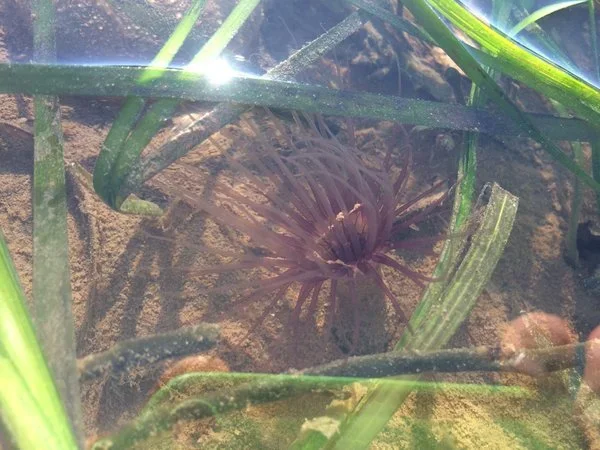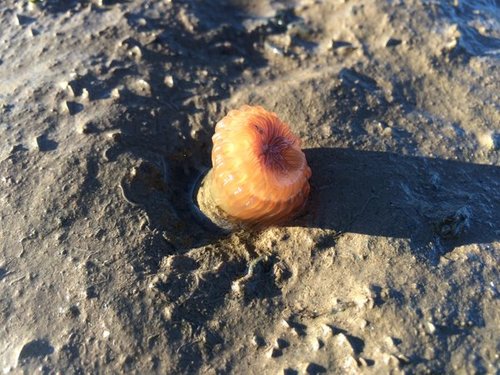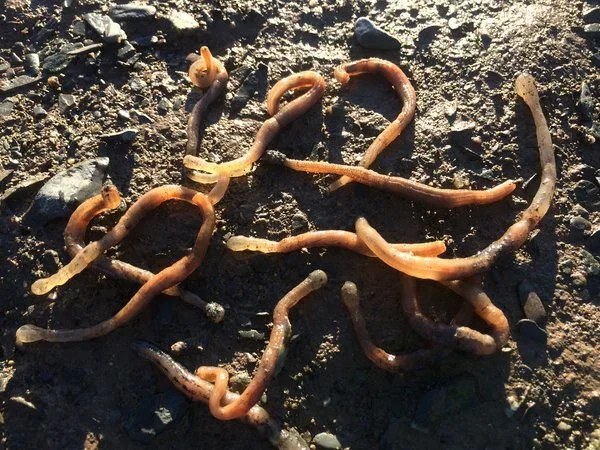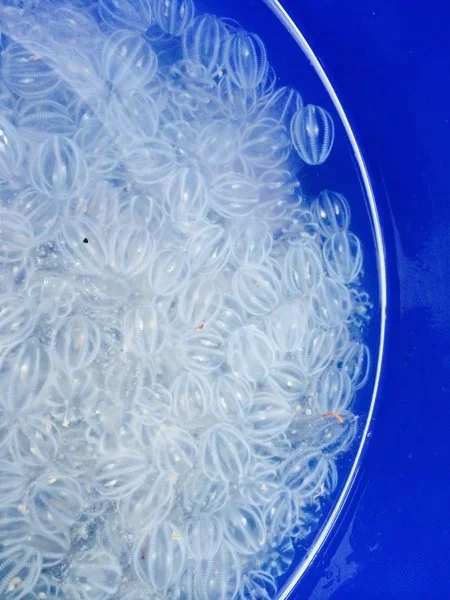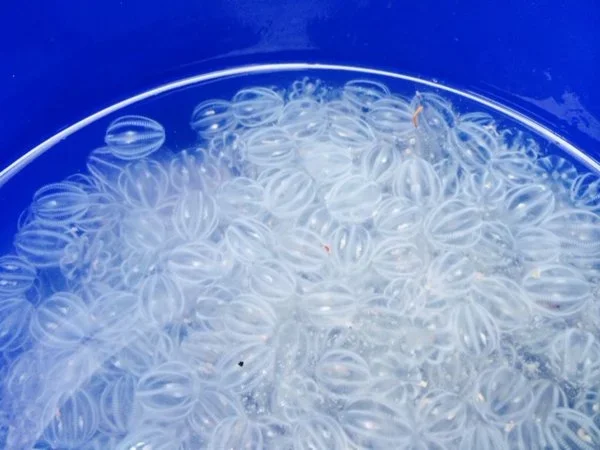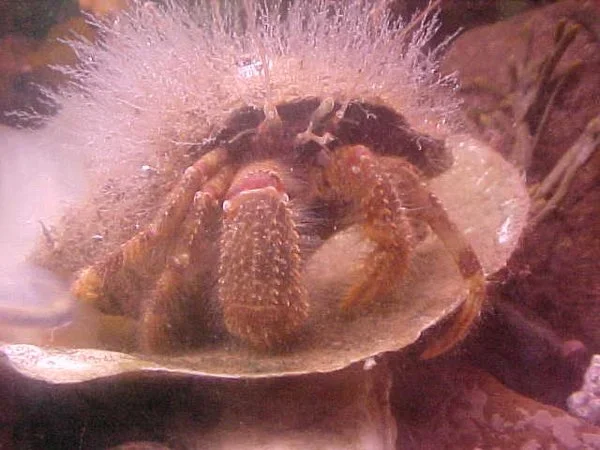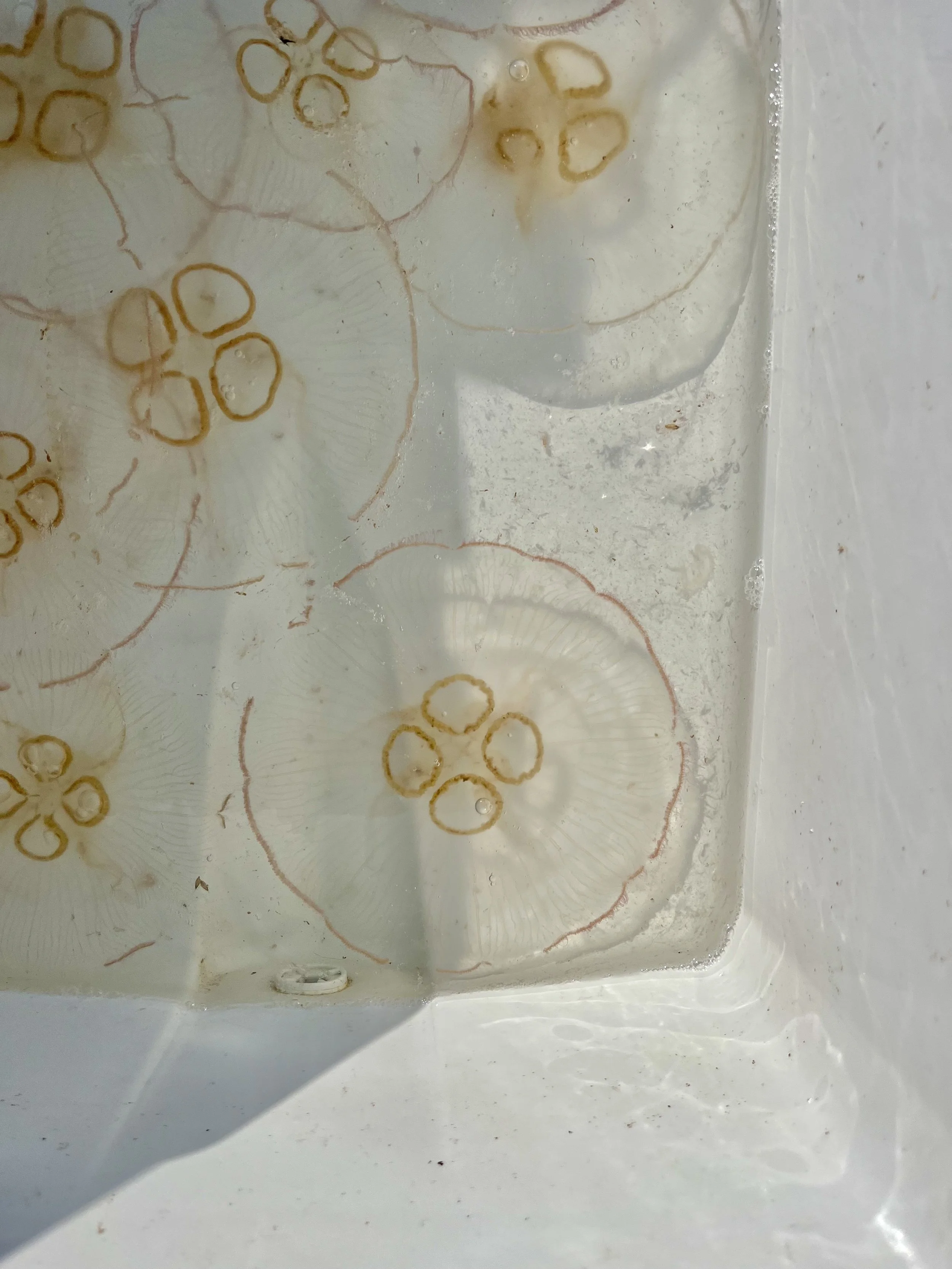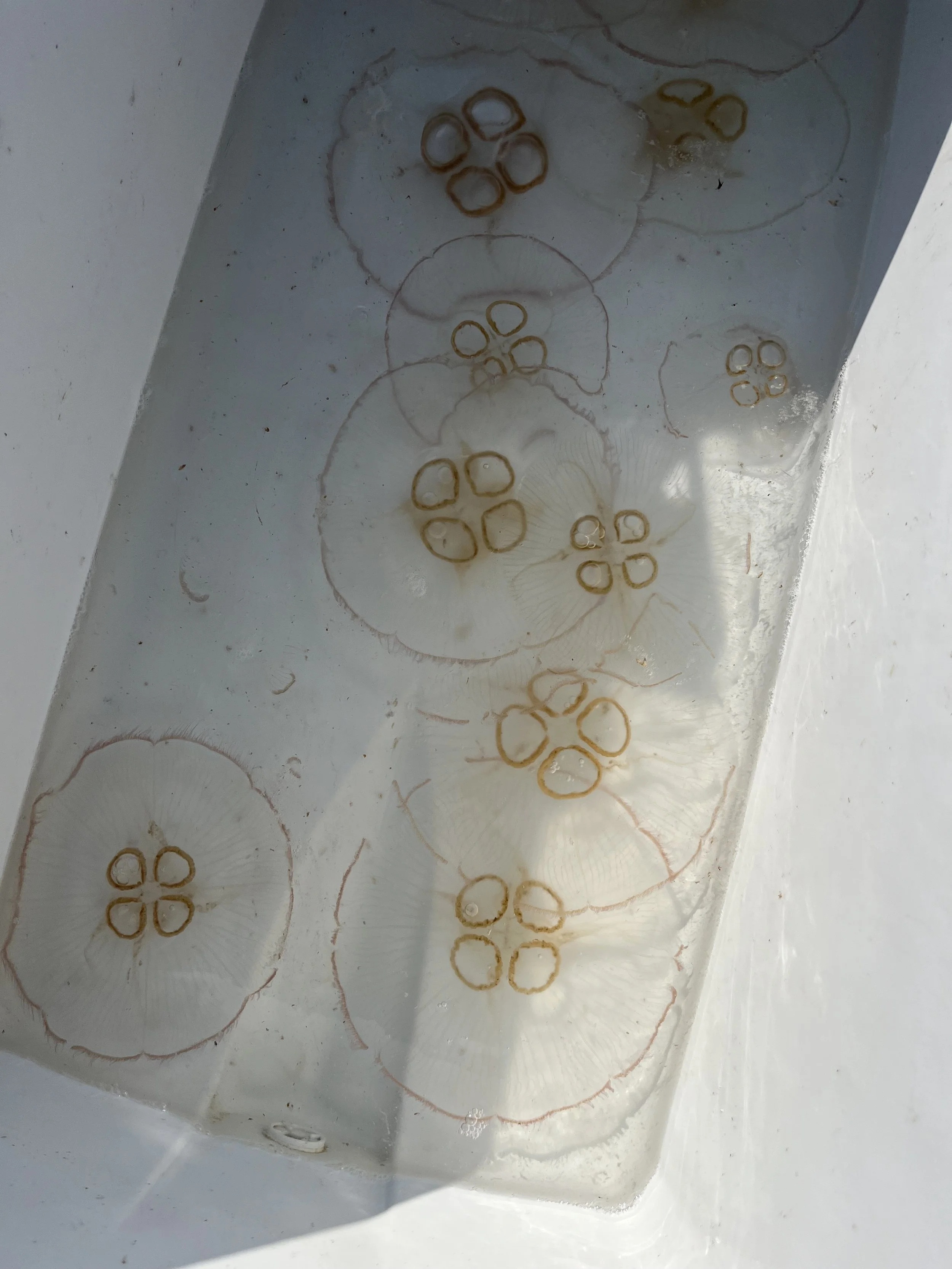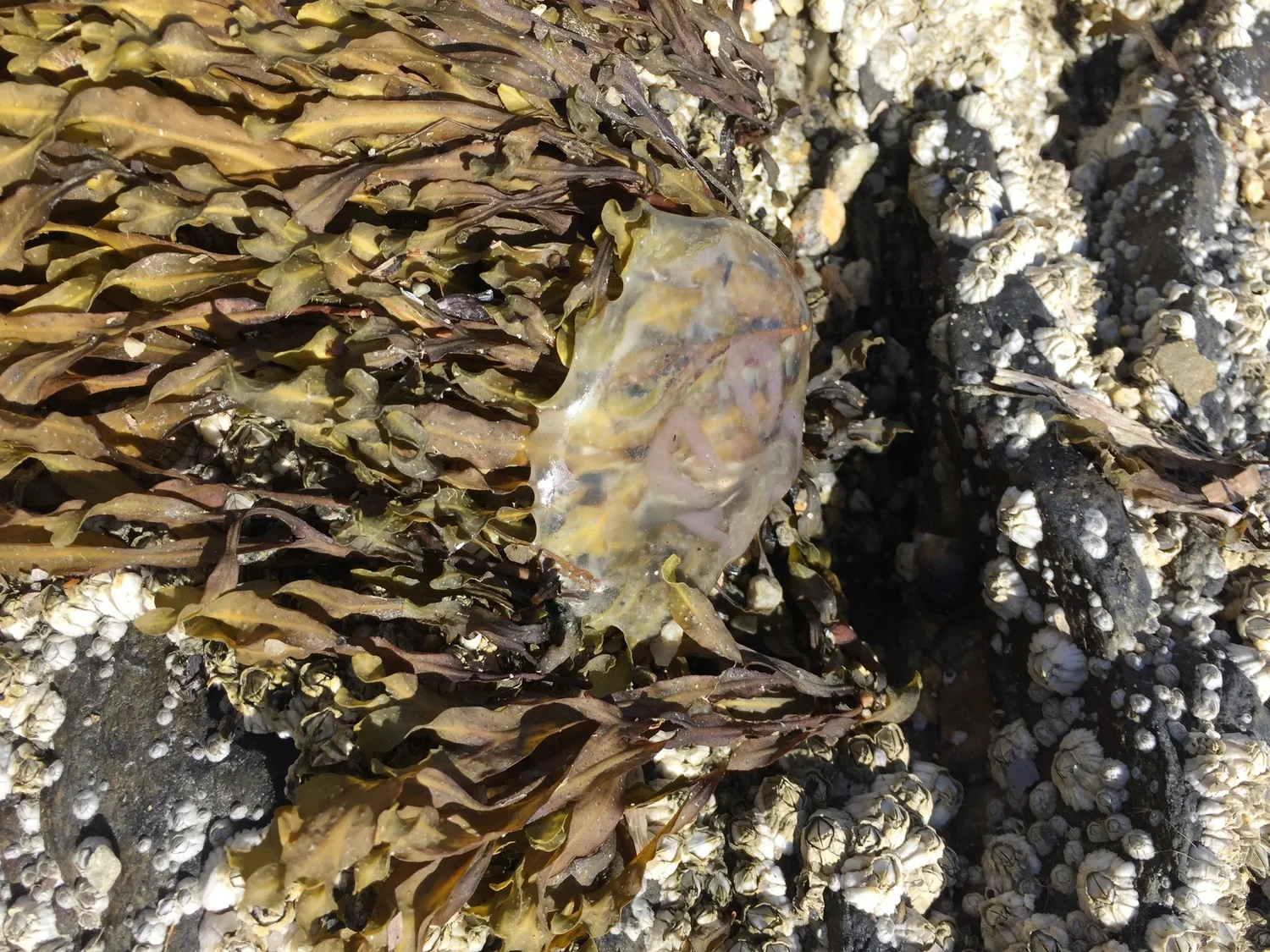Tidepool Tim says, “These anemones are tough to dig! They sometimes extend down into the sandy mud as deep as 24". For each I try to unearth, I cannot find 3 out of 4 animals. They just somehow disappear in the substrate or have tubes that go into the hard clay. N. Cerianthids can be located by looking for their slimy-rimmed burrow that resembles a clam siphon hole. sometimes part of the anemone is exposed above the surface at low tide. You will see the tentacles and the column rising up 1/2" above the mud as in the pictures above. As the tide is coming in you will see this beautiful array of short and long tentacles in a flower-like pattern spread wide in the seawater. Touch them with your boot and finger and like lightning - in a flash they are gone down into their burrows.”

